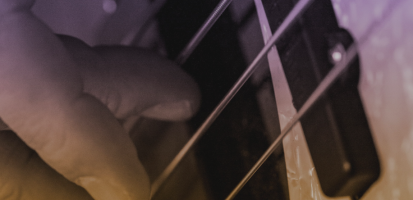| Background information | |
|---|---|
| Birth name | Gary Lee Weinrib |
| Born | (1953-07-29) July 29, 1953 Willowdale, Ontario, Canada |
| Genres | Progressive rock, hard rock, heavy metal |
| Occupation(s) | Musician, singer-songwriter, producer |
| Instruments |
|
| Years active | 1968–present |
| Labels | Mercury, Anthem, Atlantic |
| Associated acts | Rush, Big Dirty Band |
| Website | rush.com |
| Notable instruments:
Fender Geddy Lee Signature Jazz Bass |
|
Geddy Lee Weinrib, (born Gary Lee Weinrib; July 29, 1953), known professionally as Geddy Lee, is a Canadian musician, singer, and songwriter best known as the lead vocalist, bassist, and keyboardist for the Canadian rock group Rush. Lee joined what would become Rush in September 1968, at the request of his childhood friend Alex Lifeson, replacing original bassist and frontman Jeff Jones. Lee’s first solo effort, My Favourite Headache, was released in 2000.
An award-winning musician, Lee’s style, technique, and skill on the bass guitar have inspired many rock musicians such as Cliff Burton of Metallica, Steve Harris of Iron Maiden, John Myung of Dream Theater, and Les Claypool of Primus Along with his Rush bandmates – guitarist Alex Lifeson and drummer Neil Peart – Lee was made an Officer of the Order of Canada on May 9, 1996. The trio was the first rock band to be so honoured, as a group. Lee is ranked 13th by Hit Parader on their list of the 100 Greatest Heavy Metal vocalists of all time.
Lee began playing music in school when he was 9 or 10, and got his first acoustic guitar at 14. In school, he first played drums, trumpet and clarinet. However, learning to play instruments in school wasn’t satisfying to Lee, and he took basic piano lessons on his own. His interest increased dramatically after listening to some of the popular rock groups at the time. His early influences included Jack Bruce of Cream, John Entwistle of The Who, Jeff Beck, and Procol Harum. “I was mainly interested in early British progressive rock,” said Lee. “That’s how I learned to play bass, emulating Jack Bruce and people like that.” Bruce’s style of music was also noticed by Lee, who liked that “his sound was distinctive – it wasn’t boring.”
Beginning in 1969, Rush began playing professionally in coffeehouses, high school dances and at various outdoor recreational events. By 1971, they were now playing mostly original songs in small clubs and bars, including Toronto’s Gasworks and Abbey Road Pub. Lee describes the group during these early years as being “weekend warriors,” holding down jobs during the weekdays and playing music on weekends: “We longed to break out of the boring surrounding of the suburbs and the endless similarities . . . the shopping plazas and all that stuff. . . the music was a vehicle for us to speak out.” He claims that in the beginning they were simply “a straightforward rock band.”
Short of money, they began opening concerts at venues such as Toronto’s Victory Burlesque Theatre for the punk band, New York Dolls. By 1972 Rush began performing full-length concerts, consisting mostly of original songs, in cities including Toronto and Detroit. As they gained more recognition, they began performing as an opening act for groups such as Aerosmith, Kiss, and Blue Öyster Cult.
Style
Like Cream, Rush followed the model of a “power trio,” with Lee both playing bass and singing. Lee’s vocals produced a distinctive, “countertenor” falsetto, and resonant sound. Lee possessed a three-octave vocal range, from baritone through tenor, alto, and mezzo-soprano pitch ranges, although it has significantly decreased with age. Lee’s playing style is widely regarded for his use of high treble and very hard playing of the strings, and for utilizing the bass as a lead instrument, often contrapuntal to Lifeson’s guitar. In the 1970s and early 1980s, Lee mostly used a Rickenbacker 4001 bass, with a very noticeable grit in his tone. During the band’s “synth era” in the mid-1980s, Lee used Steinberger and later Wal basses, with the latter having more of a “jazzy” tone, according to Lee. From 1993’s Counterparts onward, Lee began using the Fender Jazz Bass almost exclusively, returning to his trademark high treble sound. Lee had first used the Jazz Bass during the recording of Permanent Waves and Moving Pictures, on songs such as “Tom Sawyer.”
Equipment used
Lee has varied his equipment list continually throughout his career.
Bass guitars
In the band’s earlier years, Lee’s main instrument was a modified Rickenbacker 4001. Additionally, he has used a Fender Precision Bass, as well as Steinberger and Wal basses.
Bass amplification
For Rush’s 2010 tour, Lee used two Orange AD200 bass heads together with two OBC410 4×10 bass cabinets.
Since 1996, Lee no longer uses traditional bass amplifiers on stage, opting to have the bass guitar signals input directly to the touring front-of-house console, to improve control and balance of sound reinforcement.












